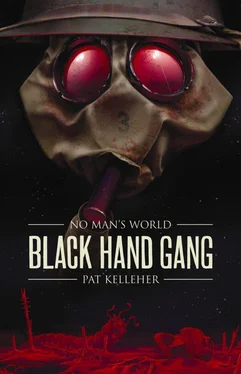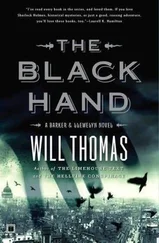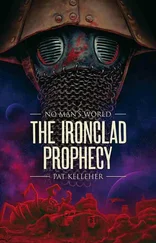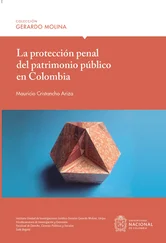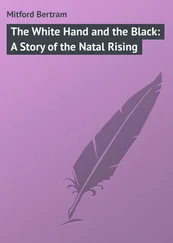Pat Kelleher
BLACK HAND GANG
13 thBATTALION PENNINE FUSILIERS: COMPANY PERSONNEL
Company HQ.
C.O.:Major Julian Wyndam Hartford-Croft
2C.O.:Captain Bernard Edward Grantham
Company Sergeant Major Ernest Nelson
Company Quartermaster Sergeant Archibald Slacke
Pte. Jonah Cartwright (batman)
Pte. Charlie Garside (batman)
Royal Army Chaplain: Father Arthur Rand (CF4) (’Captain’)
War Office Kinematographer, Oliver Hepton
2 ndLieutenant Henry Talbot, Battalion HQ,
military conductor
‘ C’ Company
No 1 Platoon
C.O.:Lieutenant Morgan
No. 2 Platoon
C.O.:2 ndLieutenant J. C. Everson
2C.O.:Platoon Sergeant Herbert Gerald Hobson
1 Section
I.C.:Lance Sergeant William Jessop
2I.C.:Corporal Harry Ketch
Pte. Thomas ‘ Only’ Atkins
Pte. Harold ‘ Gutsy’ Blood
Pte. Wilfred Joseph ‘ Mercy’
Evans Pte. George ‘ Porgy’ Hopkiss
Pte. Leonard ‘ Pot Shot’ Jellicoe
Pte. James ‘ Lucky’ Livesey
Pte. ‘ Ginger’ Mottram
Pte. Henry ‘ Half Pint’ Nicholls
Pte. David Samuel ‘ Gazette’ Otterthwaite
No. 3 Platoon
C.O.:Lieutenant Holmes
No. 4 Platoon
C.O.: Lieutenant Gilbert W. Jeffries
2C.O. Platoon Sergeant Fredrick Dixon
RAMC
Regimental Aid Post
RMO: Captain Grenville Lippett
Red Cross Nurses
Sister Betty Fenton
Sister Edith Bell
Driver Nellie Abbot (First Aid Nursing Yeomanry)
Machine Gun Corps (Heavy Section) ‘I’ Company: I-5 HMLS Ivanhoe
C.O.:2 ndLieutenant Arthur Alexander Mathers
Pte. Wally Clegg (Driver)
Pte. Frank Nichols (Gearsman)
Pte. Alfred Perkins (Gearsman)
Pte. Norman Bainbridge (Gunner)
Pte. Reginald Lloyd (Gunner)
Pte. Cecil Nesbit (Gunner)
Pte. Jack Tanner (Gunner)
D Flight 70 Squadron: Sopwith 1½ Strutter
Lieutenant James Robert Tulliver (pilot)
Lieutenant Ivor Hodgeson (observer)

PREFACE
“There Was a Front, but Damned If We Knew Where…”
THE HARCOURT CRATER is one of the greatest mysteries of World War One, along with the Angel of Mons, the Phantom Archers and the Crucified Canadian. At nearly half a mile wide, it was reputed to be the largest man-made crater on the Western Front. The official explanation was that German mines dug under the British positions in the Harcourt Sector of the Somme were filled with an experimental high explosive before being detonated on the morning of November 1 st1916, resulting in the loss of over nine hundred men of the 13 thBattalion of the Pennine Fusiliers.
Indeed, this was the accepted explanation until nearly a decade after the event, when a French farmer ploughing fields which lay along the old front line dug up several mud-encrusted old film canisters and a package of documents. Inside the canisters were reels of film which, when developed, revealed silent, grainy footage of British Tommies seemingly on an alien world. The film itself was shown to great acclaim in Picture Houses around the world and it became a minor sensation. Although there were those who claimed they could identify faces in the footage, in the end most felt it to be it a hoax.
The success of the film nevertheless engendered an appetite for Space Fiction among the general public that persisted for decades; the film’s grainy, iconic images inspiring thousands of lurid sci-fi magazine covers and pulp fiction stories.
My research further revealed rumours that the Government had approached the noted inventor Nikola Tesla, who had earlier claimed to have received extraterrestrial radio signals, to try to construct a device for contacting the lost men, but without any apparent success. The government of the day quietly closed the case. They officially declared the whole incident to be a “meticulously planned hoax” and it was consigned to the annals of British folklore, although documents believed to include letters and journals from the men of the 13 thwere discreetly returned to the families. Some eventually found their way into the hands of private collectors, where I had a chance to view them.
The original film stock from the canisters, I was disappointed to discover, did not fare as well as the letters. It was stored badly and the unstable silver nitrate composition of the film strips meant that in many cases the film decomposed, although some was salvaged and incomplete footage does still exist.
For a while, the Battalion War Diary, recovered with the film and allegedly detailing the Battalion’s life and actions on another world, was relegated to the stacks in the Regimental Museum and was surreptitiously ‘misplaced’, having been considered an embarrassment and a stain upon the regiment’s proud history.
But the myth refused to die. In subsequent years, men occasionally came forward claiming to be survivors of the battalion, returned with fantastic tales to sell, but none were believed. The story inspired the film Space Tommies, released in 1951 featuring Richard Attenborough and Richard Todd, and was the basis for a short-lived adventure strip in the boys’ comic Triumph .
However, it has become apparent from my extensive research that the mystery of the Harcourt Crater and the true fate of the men of the lost 13 thBattalion constitutes one of the biggest cover-ups in British military history. I hope that this, the first part of my account, will go some way towards setting the record straight. All of the major events have been drawn directly from primary sources where possible. Others, by necessity, are based on inference but nevertheless serve to hint at the trials, wonders and horrors they were to face, fighting on a Front far, far from home…
Pat Kelleher
Broughtonshaw November 2009

CHAPTER ONE
“Waiting for Whizz-Bangs…”
THE AUTUMN SUN ducked down below the Earth’s parapet, staining the clouds crimson and, as the chill twilight wind began to bite, Broughton Street was busier than usual. Private Seeston fidgeted impatiently as an ambling ration party of Jocks on their way to collect food for the Front Line barged past, discussing rumours of the impending attack.
“Oi, newbie! Y’do know this is one way don’tcha, and it ain’t yours?” one said as they shuffled awkwardly by.
“Sorry,” said Seeston. “We’ve only just taken over this sector.”
“Who you with?”
“Thirteenth Pennine Fusiliers.”
“Thirteen, eh? Unlucky for some.”
“Unlucky for Hun , we say, mate,” said Seeston, bridling at the insult.
The Pennine Fusiliers was a regiment with a proud history that went back to Waterloo. They had served in the Boer and the Crimean wars, as well as during the Indian Rebellion. It was their proud boast that they were the backbone of the army in the same way their namesake mountains were considered the backbone of England. Their barracks were in Broughtonthwaite, a northern mill town nestling among the Pennine hills on the border of Lancashire and Yorkshire. The 13 thBattalion of the Pennine Fusiliers was one of several local Pals Battalions raised in 1914 as part of Kitchener’s New Army. With only a small standing army at the outset of the war, a million men were wanted to fight the Bosche. Towns vowed to raise as many of the new Battalions as they could muster. A patriotic fervour swept the nation as young men — driven by dull lives, poverty and the lure of adventure — signed up along with their friends, neighbours and workmates. They couldn’t wait to get stuck into the Hun and were desperate to see some action before the war was over.
Читать дальше
